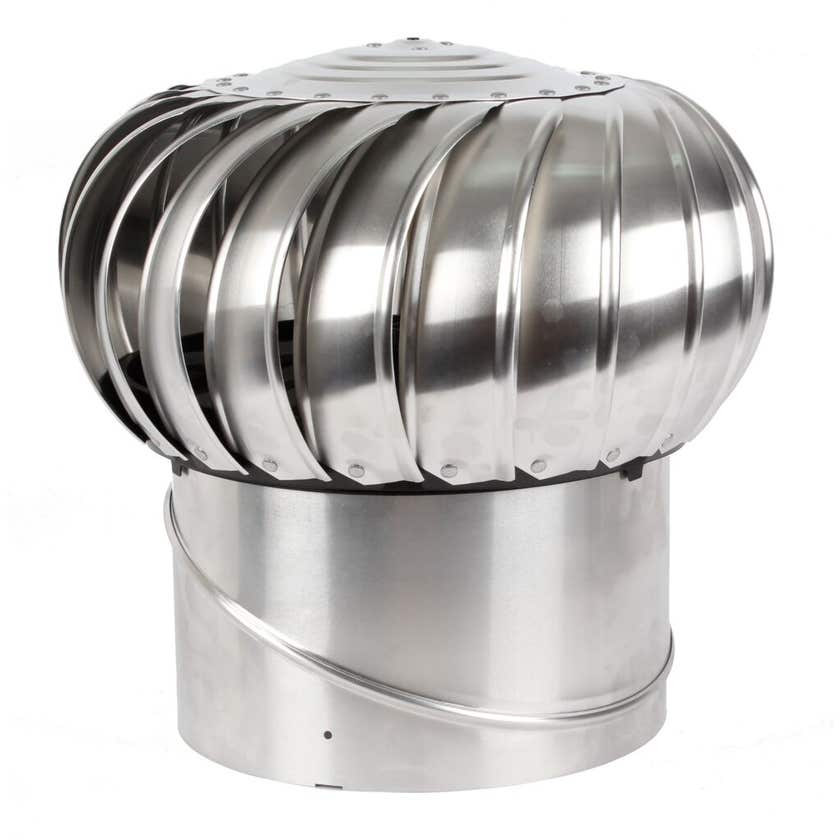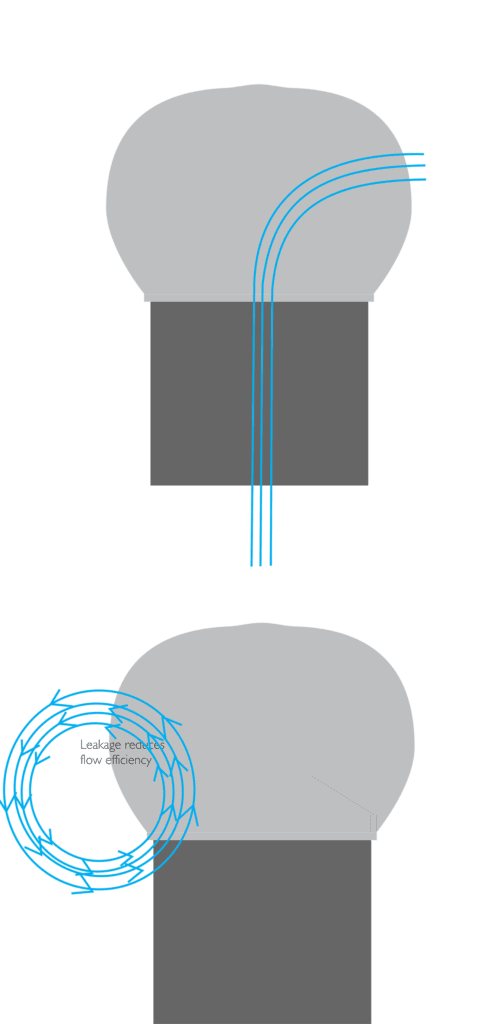What is the difference in Roof Vents?
by Isa Stralian Whirlybird type roof vents have one thing in common and that is that they rotate, either with the wind, or by the hot air trying to get out of the roof. But are they the same?…..no!On inspection you are able to see that some are made better.And some perform better than others…
by Isa Stralian
Whirlybird type roof vents have one thing in common and that is that they rotate, either with the wind, or by the hot air trying to get out of the roof.
But are they the same?…..no!
On inspection you are able to see that some are made better.
And some perform better than others which is not to say they perform well.
You will see that all have riveted vanes and rotate, but that’s about where the similarity ends.

The efficiency of a rotary roof ventilator is dictated primarily by the proximity of the rotor to the upright.

You can see the upper diagram shows the air path expected.
However if the gap between rotor and spigot is greater than 3mm performance changes.
What happens here is that the air circulates between the rotor and the spigot ( as shown in lower image ) making the efficiency somewhat non existent.
You can see the number of vanes in the construction.
A flawed design will have more vanes which means it’s efficiency is compromised and the manufacturer has concerns as to the water ingress during operation in rain.
Then you have,
1/ the movement which can vary from plastic or metal bushes to plastic or metal bearings.
2/ Impact damage and distortion by hail
2/ the failure of retainer that stops the whirlybird from taking flight in severe wind conditions.
3/ the type of flashing to make water resistant to ingress
4/ the maintenance
5/ the product life
6/ the fact that the 300mm unit is stated as being suitable for 80s/m at best so you may need several especially if your roof pitch is less that 25 degrees.
Warranty
When you consider the warranty and it’s terms you will see that the removal and replacement is a cost you incur.
Either you, or a contractor, are going to have to perform at cost.
You want the best product at a price that represents value for money.
However the case of buyer beware applies.
When considering the long term, the anticipated impulse low cost purchase may prove to be costlier than you would like.
